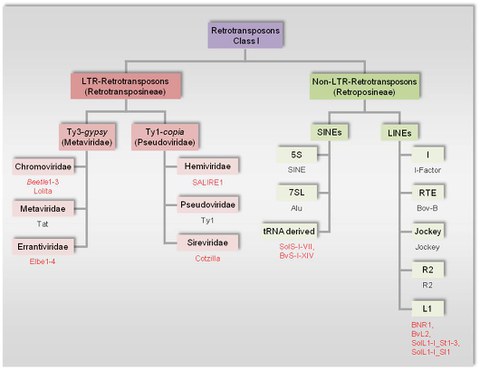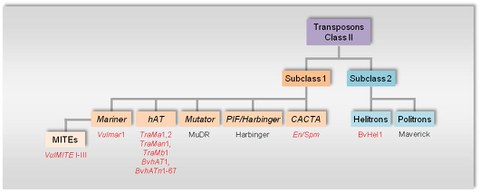Transposable Elements and Tandem Repeats
Genomic Impact of Tandem Repeats
For current research please see our Tandem Repeat Publications.
Genomic Impact of Transposable Elements
Transposable elements (TEs) are a common feature of all eukaryotic genomes. In plants, they constitute a large proportion with up to 80 % of the nuclear genome. Their massive amplification and dynamic nature assign them a central role in the structure, function and evolution of eukaryotic genomes. TEs can be classified based on the nature of the transposition mediate, whether the transposition is RNA-mediated (class I) or DNA-mediated (class II). The diversity of integration mechanisms reflects their capability for adaptation and changes.
Active TEs influence the genome organization in a comprehensive manner by causing chromosome breaking, illegitimate recombination and genome rearrangement. As some TEs are capable to move genes or gene fragments into new locations, other ones can affect the local gene expression and chromatin configuration by their insertion.
Numerous transposable elements have been characterized, including:


